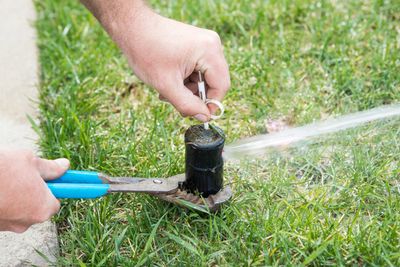Some highlights you might be surprised to learn

Up to 80% of traditional irrigation systems in HOAs operate inefficiently
Studies have found that HOA systems operate at suboptimal efficiency with water loss primarily occurring due to overspray, evaporation, and runoff rather than equipment leaks.
Evening watering isn't always best (contrary to common belief)
Evening irrigation isn’t always best. While it reduces evaporation, it increases fungal disease risk by keeping foliage wet overnight. Mid-morning irrigation (3-10 AM) often provides the optimal balance between water conservation and plant health.
Soil moisture sensors can reduce water usage by 40-70%
Smart irrigation systems using soil moisture sensors can reduce water consumption by 40-70% compared to timer-based systems while improving landscape health. The ROI period for most commercial properties is typically just 12-24 months.
New textile-based subsurface systems can cut water use by up to 80%
New textile-based subsurface irrigation systems distribute water through capillary action, reducing water use by up to 80% compared to traditional sprinklers while eliminating surface evaporation and runoff entirely.
Non-potable water sources
Many commercial properties and HOAs can legally use non-potable water sources for irrigation, including captured rainwater, treated greywater, and AC condensate. In some jurisdictions, these alternative sources can reduce water bills by up to 60%.
Biochar Soil Amendments
Biochar soil amendments in landscaped areas can increase water retention by 15-25%, reducing irrigation needs while sequestering carbon. Some municipalities now offer rebates for HOAs and commercial properties implementing biochar soil improvement programs.
Drone-Based Monitoring
Thermal imaging drones can now detect invisible irrigation issues, including underground leaks and irrigation coverage gaps, without installing permanent sensors or disrupting landscaping.
Water Window Staggering
Dividing properties into hydro zones with staggered irrigation schedules (instead of watering everything simultaneously) can reduce water pressure issues and improve absorption rates by up to 30%, especially for properties with elevation changes.
Root-Zone Temperature Management
Maintaining optimal root-zone temperatures through strategic mulching and irrigation timing can reduce water requirements by 15-20%. This is more important than air temperature for determining irrigation needs.
Distribution Uniformity Testing
Distribution uniformity (DU) testing reveals that most systems operate at under 60% efficiency. Simple adjustments to improve DU above 70% can save more water than expensive controller upgrades for many properties.
This website uses cookies.
We use cookies to analyze website traffic and optimize your website experience. By accepting our use of cookies, your data will be aggregated with all other user data.